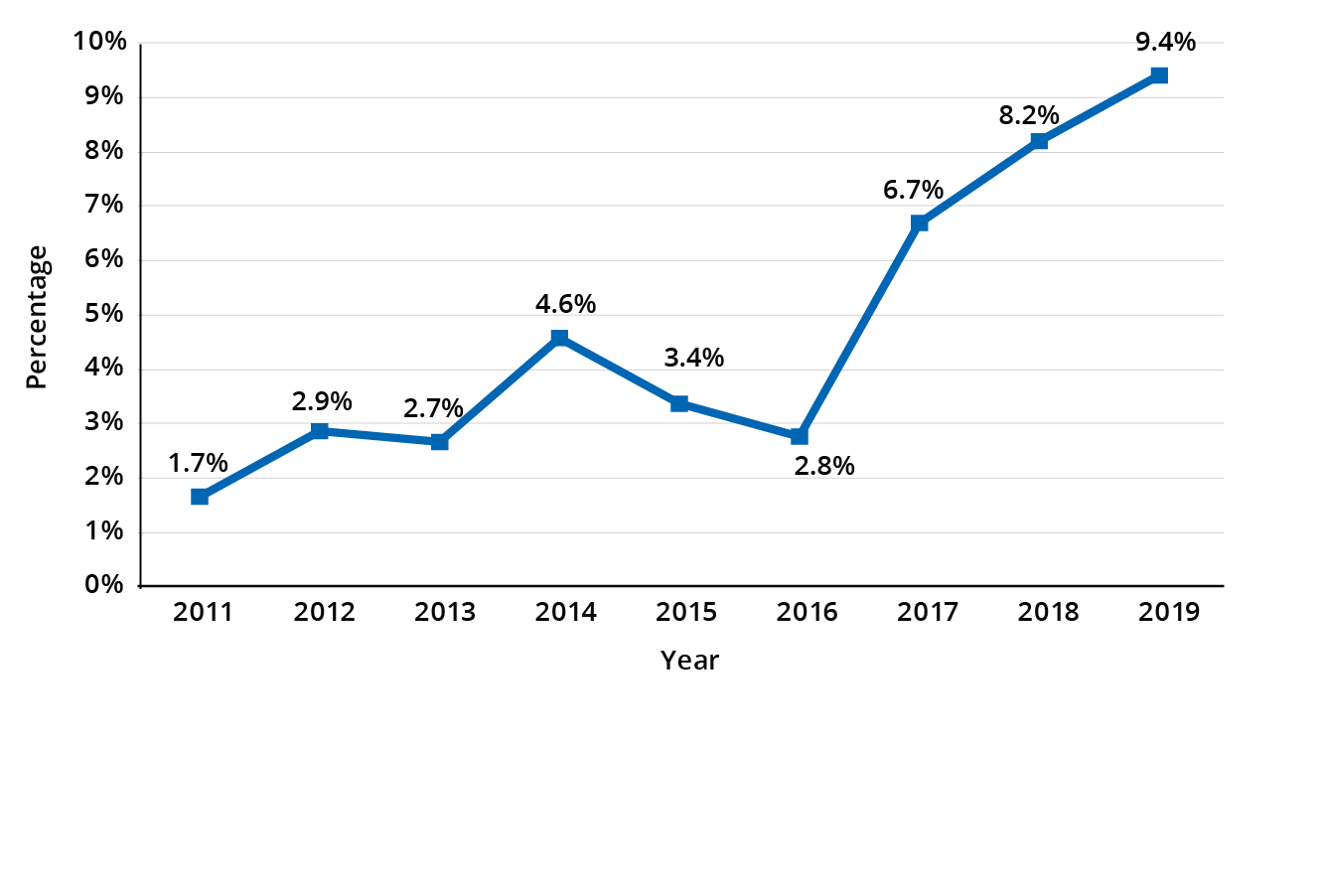Summary
Background
The NSW Bail Assistance Line (BAL) is an after-hours helpline that seeks to facilitate bail for young people, either by referring them to transport and crisis accommodation services or advocating for the police to grant bail.
We examine the following aspects of BAL’s operation:
- The number and proportion of bail refused young people that are placed by BAL
- The demographic and offending characteristics of the young people that BAL places
- Whether BAL is associated with a reduced likelihood of incarceration
- Whether BAL is associated with reduced offending by young people
Key findings
BAL placed 1.7% (33) of young people that were bail refused by police in 2011 which rose to 9.4% (51) in the first six months of 2019. There are three reasons for the relatively small proportion of young offenders reached by BAL:
- BAL only targets young people charged between 4pm and 3am for whom conditional bail is a viable option under the NSW Bail Act (2013).
- BAL is unable to place all referrals due to a lack of services.
- The police make their bail decision before any contact with BAL, and BAL is, in many cases, unsuccessful in advocating for the young person’s release.
Young people placed by BAL are 10.5 p.p. less likely to enter custody compared with similar young people that could not be assisted due to a lack of services. However, there was no evidence that BAL is associated with a reduction in the probability or frequency of offending.
Conclusion
BAL effectively diverts young people from custody, but its current reach is small. The impact of any expansion of BAL on youth remand rates will depend on police referring more young people to BAL and their willingness to consider varying a young person’s bail determination.
